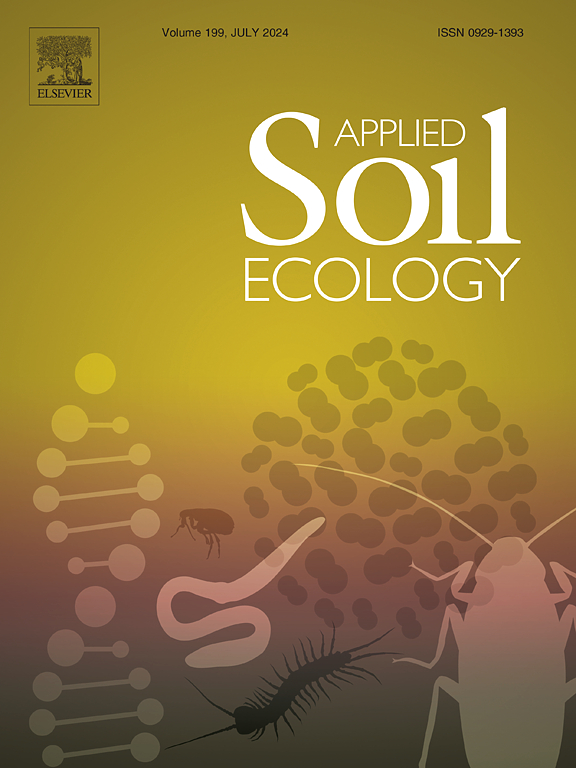Enhancement of rice production and soil carbon sequestration utilizing nitrogen-fixing cyanobacteria
IF 4.8
2区 农林科学
Q1 SOIL SCIENCE
引用次数: 0
Abstract
Farmland soils are currently experiencing severe degradation, with a significant decline in soil organic carbon (SOC) content. Nitrogen-fixing cyanobacteria, known for their efficient green manure properties, have considerable potential to improve soil quality. However, the underlying mechanisms driving their effects remain unclear. In this study, we utilized a nitrogen-fixing cyanobacterial strain (Anabaena azotica SJ-1), isolated from local Mollisol soil, to assess its impact on rice plant growth and to elucidate the associated mechanisms. The results indicated that Anabaena azotica SJ-1 significantly enhanced rice plant growth, particularly in low-yielding soils (dry weight of rice spikes increased by 38–74 % in high-yielding soils and 107–157 % in low-yielding soils). Soil pH, available nitrogen content, and activities of soil acid phosphatase and N-acetyl-β-glucosaminidase were all increased with the application of Anabaena azotica SJ-1. Additionally, SOC content increased, characterized by an increase in alkyl C and a decrease in amid/carbonyl C. Moreover, the metabolic activity of live microbes in the soil was enhanced. Genome sequencing revealed that Anabaena azotica SJ-1 has a genome consisting of 6,115,153 bp nucleotides, eight plasmids, and 5367 protein-coding genes. Carbohydrate metabolism was identified as the primary metabolic pathway, while energy metabolism relied primarily on oxidative phosphorylation. This study underscores the significant potential of nitrogen-fixing cyanobacteria to improve the quality and efficiency of degraded Mollisol soils.
求助全文
约1分钟内获得全文
求助全文
来源期刊

Applied Soil Ecology
农林科学-土壤科学
CiteScore
9.70
自引率
4.20%
发文量
363
审稿时长
5.3 months
期刊介绍:
Applied Soil Ecology addresses the role of soil organisms and their interactions in relation to: sustainability and productivity, nutrient cycling and other soil processes, the maintenance of soil functions, the impact of human activities on soil ecosystems and bio(techno)logical control of soil-inhabiting pests, diseases and weeds.
 求助内容:
求助内容: 应助结果提醒方式:
应助结果提醒方式:


